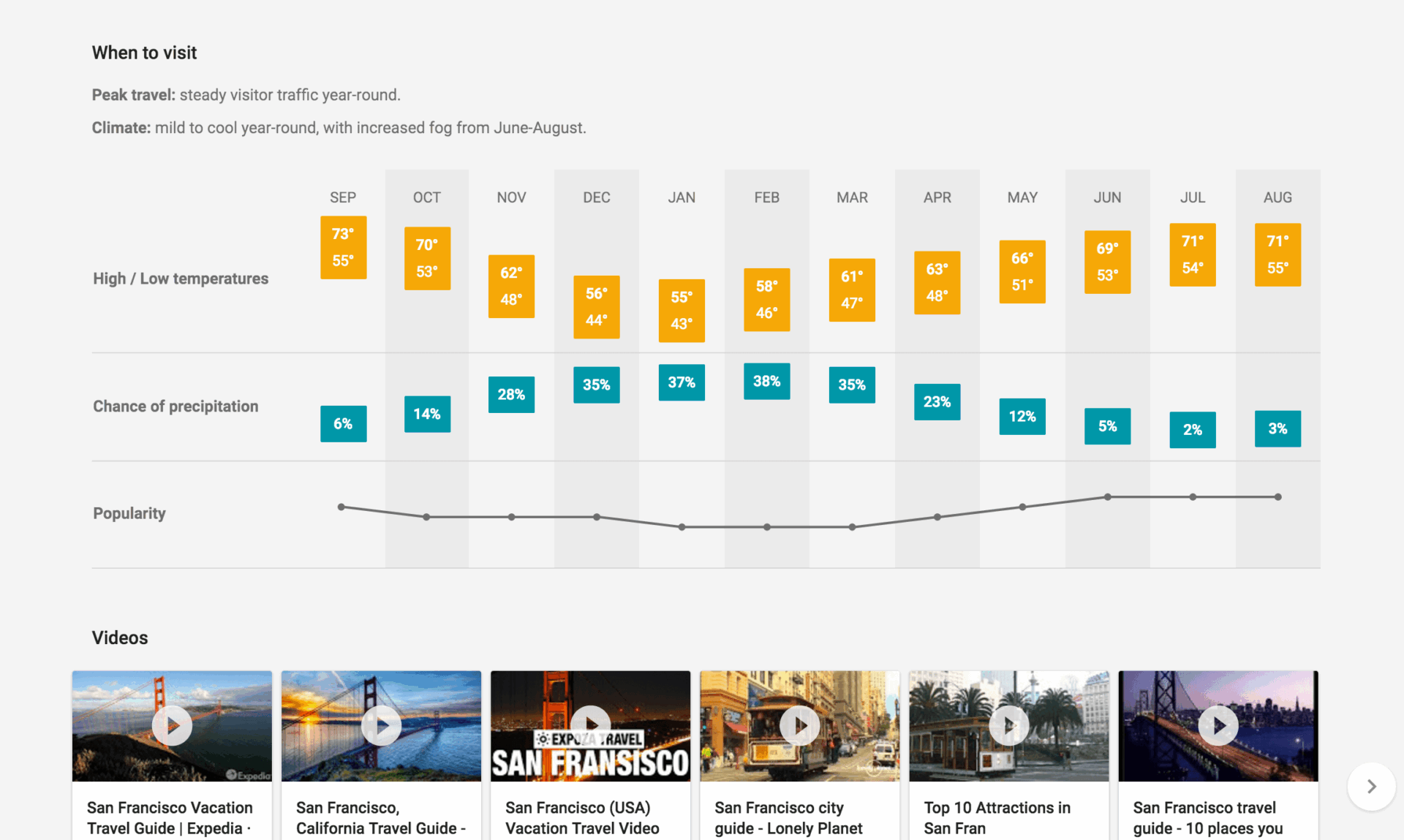
There are clearly a lot of big things going on with Google travel recently. In January we first posted about Google’s destination planning experience on mobile and have been waiting to see it pop up on desktop. We’re now seeing the experience firing on desktop when searching for a city like “San Francisco, CA”.
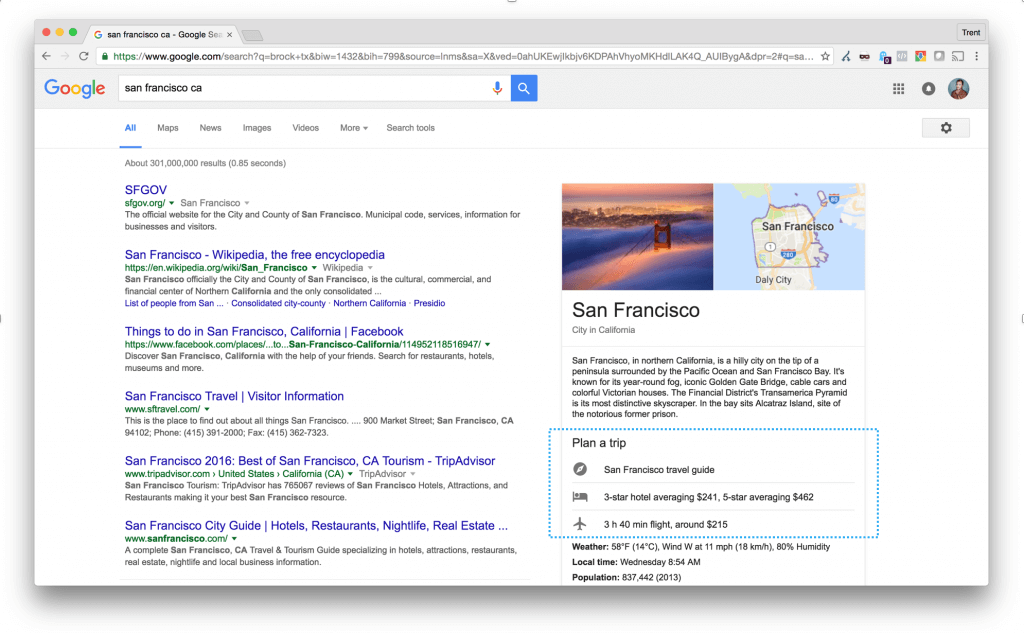
The knowledge panel now has a section to plan a trip, where the user can view a travel guide or launch directly into hotels or flights. We’ll spend our time focusing on the travel guide sections since this is where there are some really interesting new features.
Travel Guide
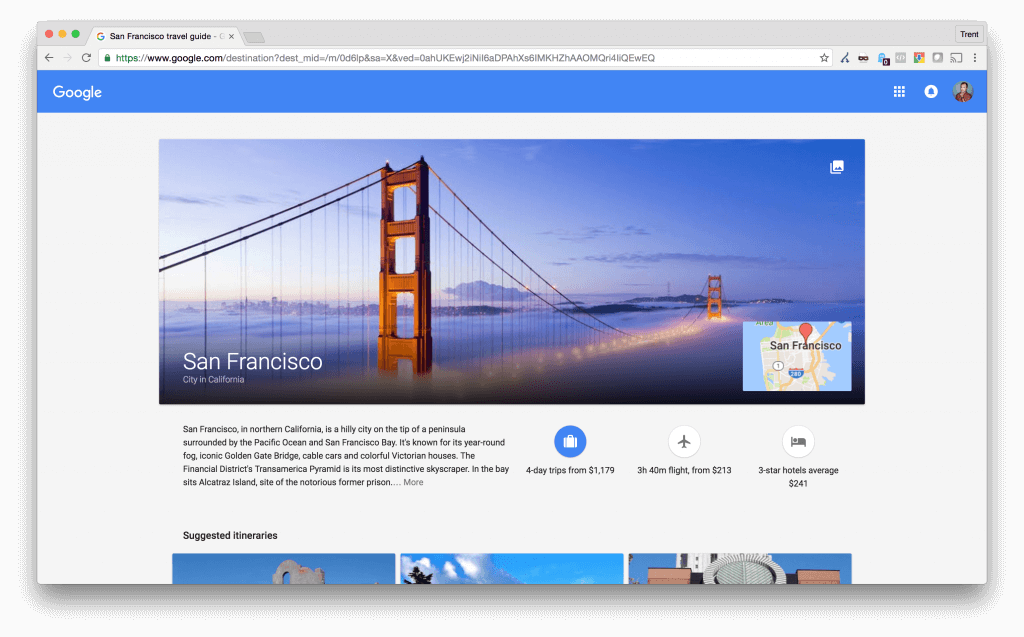
In the travel guide, there is an overview of the city with entry points into multiple parts of the Google ecosystem. For example, clicking the banner image will open up image search with more images of San Francisco. Clicking the small map icon will open Google maps with a pin on SF. The flight and hotel icon will send you into either of those experiences.
Suggested Itineraries
For large metros like San Francisco, Google has written suggested lists of things to do with a map of how to get to each POI. Notice at the bottom each card it says the Itinerary was written by Google. We have not found other writers, but this could point towards these being user-generated / shareable or allowing other vendors to provide more itineraries.
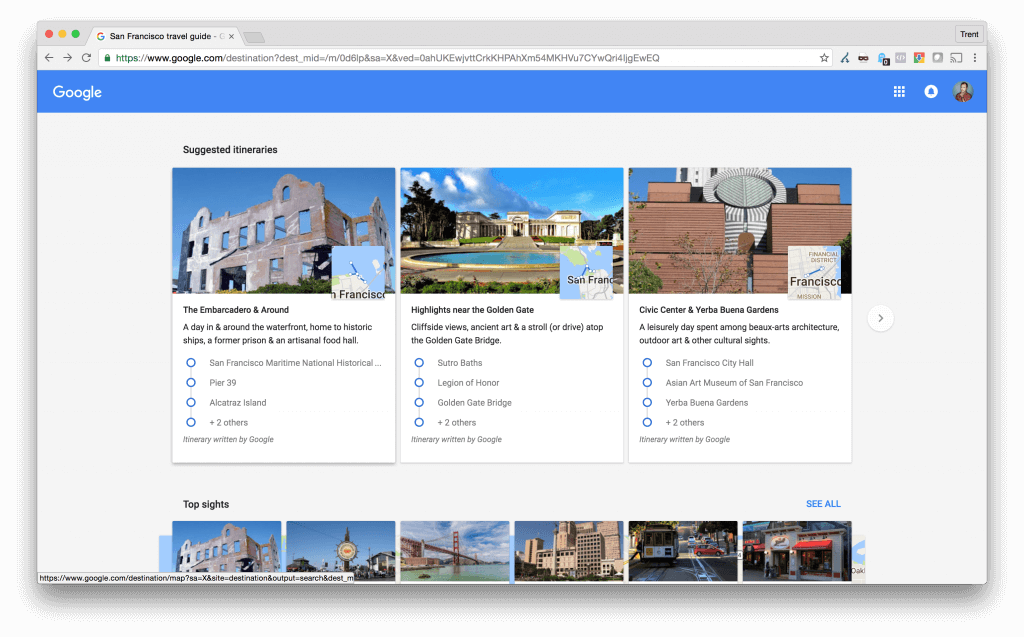
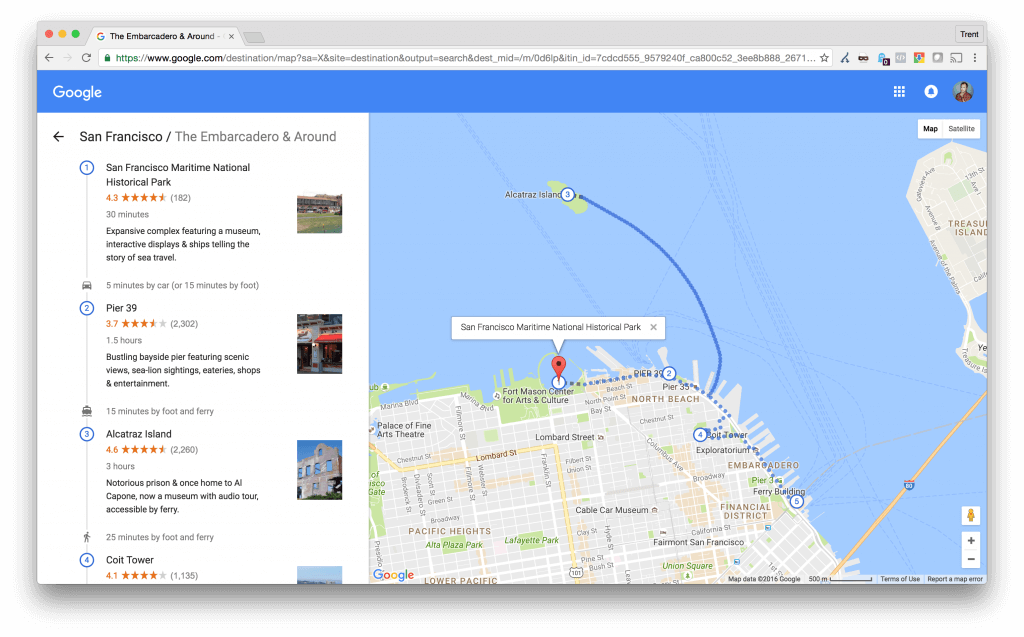
Top Sites
This pulls in the top points of interest for the city. Clicking any of them will open up a map destination view with more details and directions.
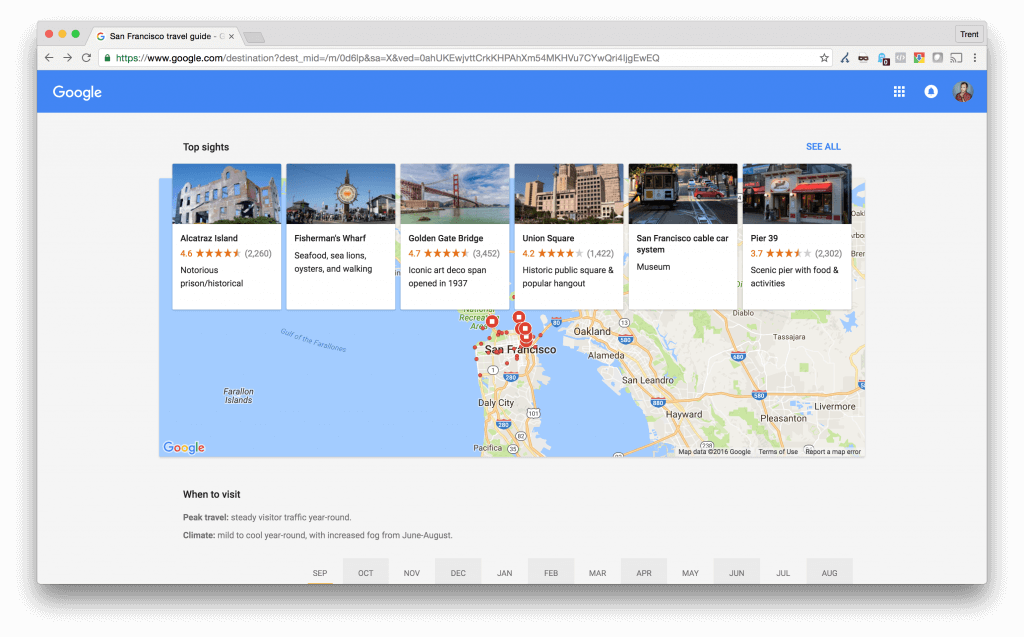
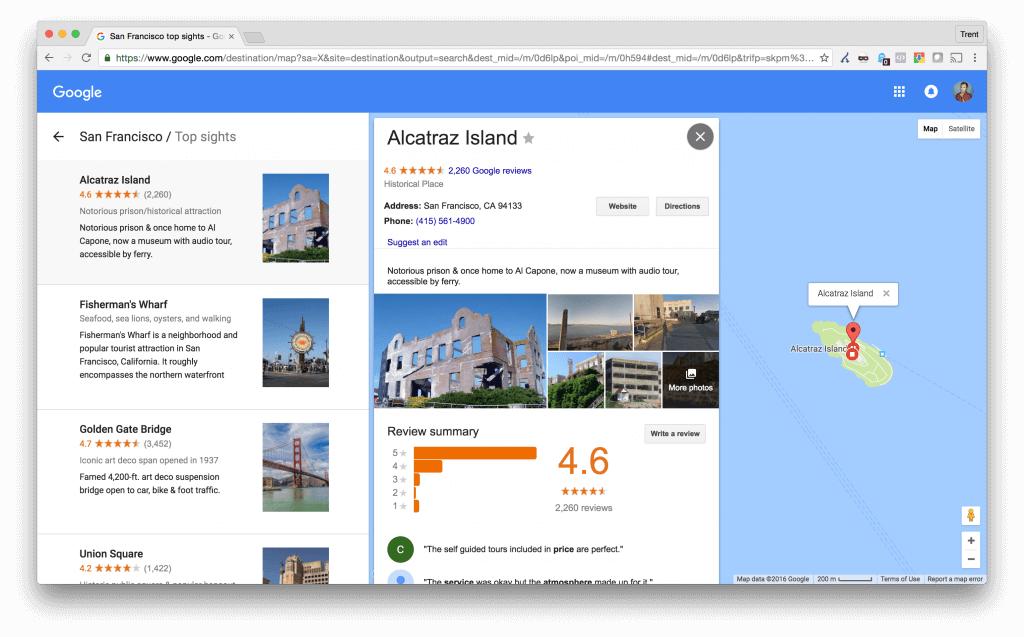
When to Visit
This is one of my favorite views provided in the travel guides. This section shows peak travel times, climate, high and low temperatures by month, chance of rain by month, and a graph of popularity for travel.
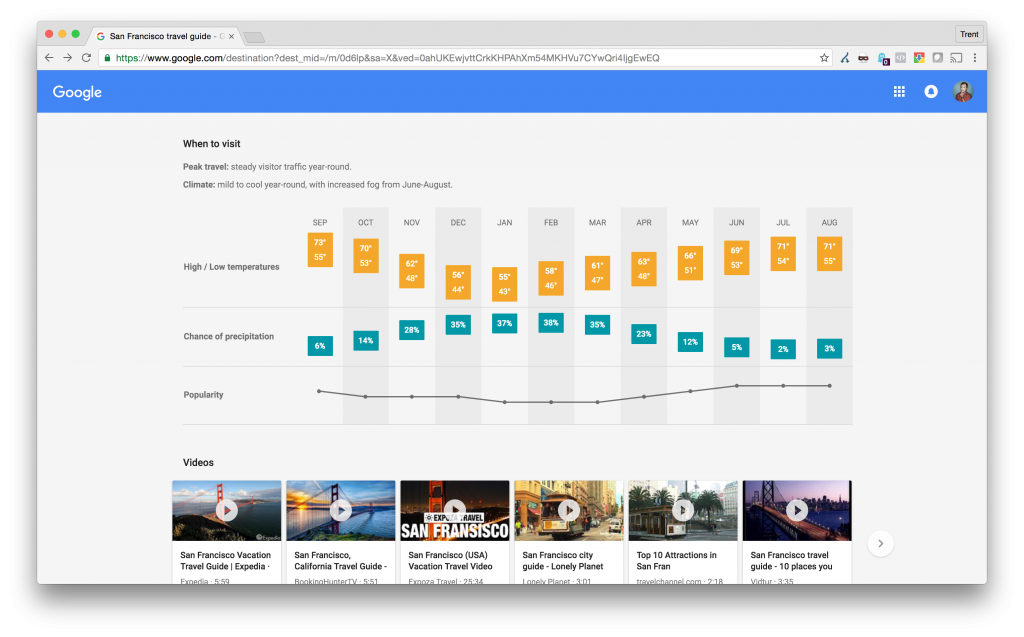
Videos & Other Places
This section pulls in destination videos and travel guides hosted on YouTube to further explore the location. The other places to explore section lets you quickly pull up other travel guides you might be interested in.
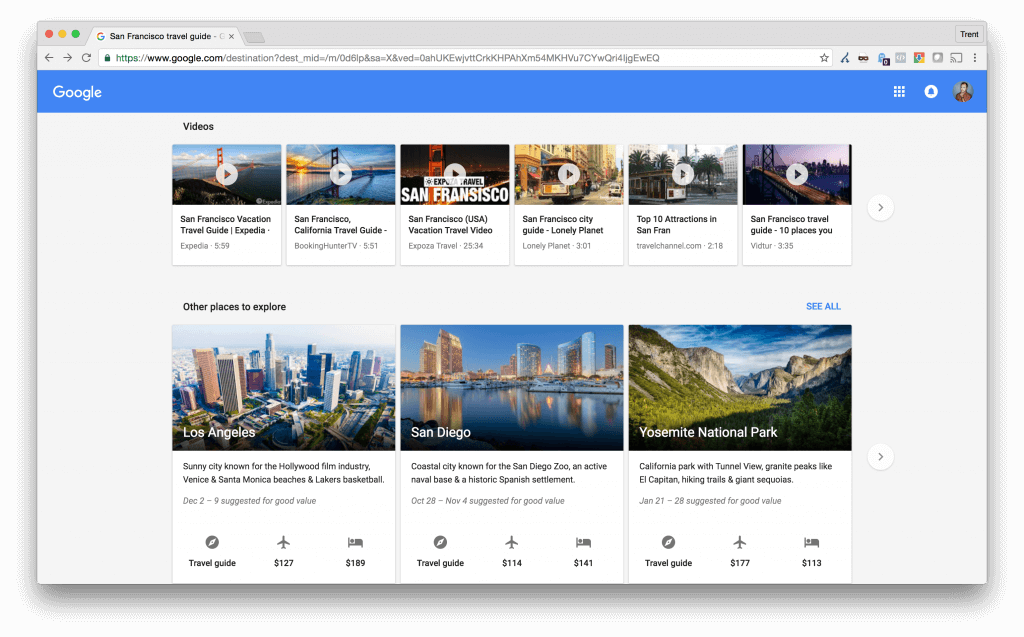
Is it only for large metros?
No! It appears that the travel guides are being dynamically generated. One of our favorite developers, Bryce, lives in Brock, Texas, also known locally as “Brock, America.” It’s a sprawling metropolis. (Sarcasm.) We checked to see if the travel guide data was specific to large metros or if it would also fire for rural areas. There is certainly less information in the guide than San Francisco, but it still gives you some information like weather, drive time, average hotel price, and other destinations to explore.
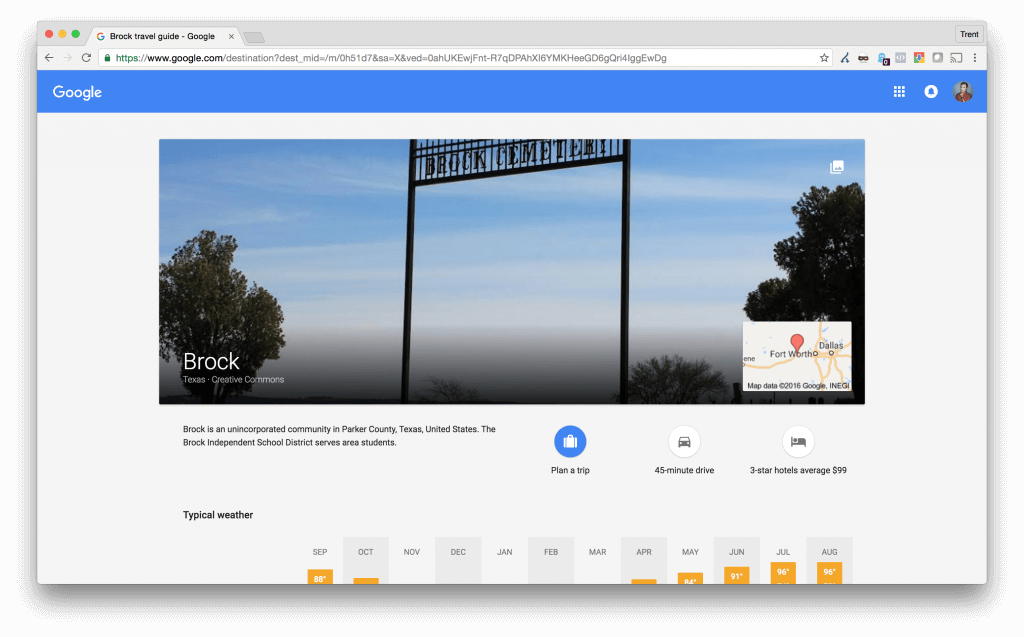
Plan a Trip
The main call to action on the page is the button to plan a trip. Clicking this opens up the trip planner. The trip planner adds up the cost of flights and hotels to give you an idea of how much a full trip would take. Here are the key components to the trip planner.
- # of Travelers – 1 traveler is the default but can be changed to 2 travelers
- Flight Stops – Options are Any, Up to 1, or Non-stop
- Length of Stay – 1 to 14 nights stays can be selected. Default is 4
- Hotel Class – Options are Any, 3+, 4+, 5+
- Itinerary Dates – You can change your itinerary date by clicking a different start date on the estimated price chart. This updates the flight prices below.
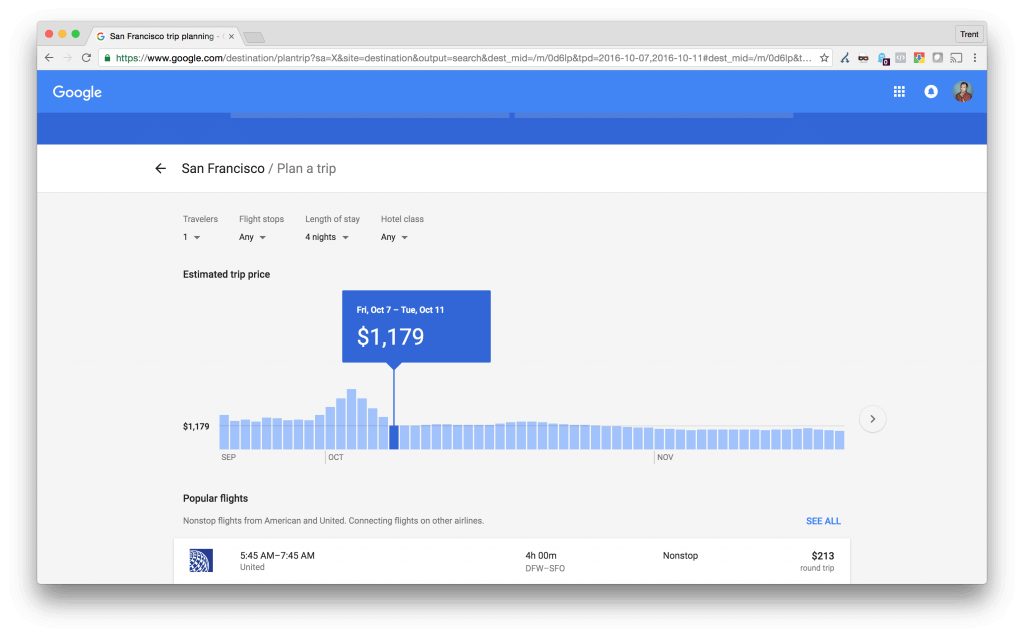
What It Means
This is actually a really exciting move for Google. They have an incredible amount of information and content relevant to a user who is looking to travel, but it’s historically been difficult for one to pull all of those pieces together. Previously, to get all of the information the travel guide contains, you would have to separately interact with around 6 different Google products. This is one of the first times we are seeing all of these pieces of information packaged up in a way that really makes it easy for the user. This launch continues to validate Google’s dedication to seamlessly integrate products and make the travel experience easier for users.
You may be interested in
GET IN TOUCH
Ready to get started?
Don’t let your brand get lost in the noise. Partner with Koddi to unlock the power of commerce media and transform the way you engage with your customers. Our team of experts is here to help you navigate complexities and develop a strategy that drives results — no matter what industry – in as little as 45 days.